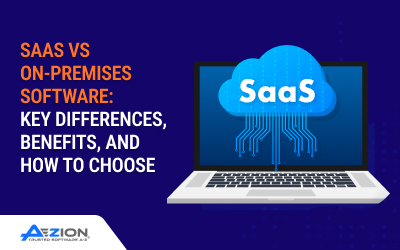Summary
Every business wants to move faster, serve better, and stay ahead. One tested way to accomplish this is by rethinking digital delivery. The benefits of web applications go beyond basic accessibility. They enhance collaboration, rationalize updates, and support growth with greater control, permitting businesses to adjust quickly without sacrificing performance or customer experience.
Introduction
The need for fast, flexible, and user-friendly business solutions continues to rise in an increasingly digital-first world. From internal workflows to customer engagement, digital efficiency is no longer optional. Among the tools gaining momentum, the benefits of web applications have proven especially valuable for companies aiming to scale, modernize processes, and compete with agility.
What Are Web Applications?
Web applications are interactive programs accessed through a web browser, designed to perform specific functions or services. Unlike traditional desktop software, they require no installation, offering immediate access across devices. Their flexibility, cost-efficiency, and cloud-based delivery model make them ideal for dynamic business environments prioritizing speed and cross-platform usability.
Considering Web applications vs Websites, while websites primarily offer static content and information, web applications allow users to perform tasks, input data, and receive dynamic responses. Web apps are interactive by design, often featuring login systems, databases, and custom dashboards tailored to business or user-specific functions.
Top Benefits of Web Applications
Before investing in digital infrastructure, businesses often seek flexibility, control, and speed of deployment. Web applications meet these demands by offering various functional and strategic advantages across industries.
Accessible Anywhere with Internet
Web applications operate through browsers, making them accessible from any device with internet access. This empowers users to work remotely, access services on the go, and maintain continuity across offices, geographies, and time zones without installing software locally.
Easy Updates and Centralized Management
Since the application runs on a central server, updates are implemented once and instantly available to all users. This eliminates the need for individual installations or patches, streamlines version control, and reduces team operational delays.
Reduced Costs for Development and Maintenance
Unlike traditional desktop software, web applications minimize hardware dependency and IT overhead. Development cycles are shorter, deployment is faster, and maintenance is simplified, making the benefits of web applications highly cost-efficient for both startups and large enterprises.
Scalable to Business Growth
As business demands grow, web apps can be scaled effortlessly by expanding server resources or adding functionalities. This elasticity supports growth without disrupting ongoing operations or requiring significant infrastructure changes, making it ideal for evolving needs.
Real-Time Data Sharing and Collaboration
Modern web apps facilitate real-time updates, enabling users to work collaboratively and access synchronized data instantly. Whether managing workflows, editing documents, or tracking performance, teams stay connected and aligned through live interfaces and shared databases.
High Security and Controlled Access
Enterprise-grade web applications often feature strong encryption, access controls, and multi-factor authentication. With data housed centrally, threats can be monitored and addressed proactively, reducing exposure compared to locally installed systems or outdated software versions.
Compatible with Multiple Devices
A well-designed web app functions across smartphones, tablets, laptops, and desktops. This cross-device compatibility ensures a consistent user experience and maximizes accessibility, especially for businesses managing field teams or distributed staff.
Fast Deployment Across Teams
Once a web application is developed and hosted, onboarding new users requires only a browser and login credentials. This allows companies to deploy tools across departments or clients without time-consuming setup or infrastructure investments.
Why Choose Custom Web Applications
Off-the-shelf tools serve basic needs, but lack the adaptability required for complex business environments. Custom web applications offer tailored functionality, better performance, and long-term strategic value.
Tailored to Business Workflows
Unlike generic tools, custom web applications are built around specific processes, roles, and goals. This precision reduces inefficiencies, supports automation, and minimizes workarounds that often arise with rigid, pre-built systems.
Improved Data Ownership and Privacy
Custom web apps give businesses complete control over where and how data is stored, accessed, and shared. This is especially important for industries with compliance regulations or proprietary operational data.
Scalable for Future Demands
Businesses evolve, and custom web apps are easier to scale or modify without starting from scratch. This future-ready architecture supports changing user loads, expanded features, and integration with newer tools as the business grows.
Seamless Integration with Internal Systems
Custom solutions connect smoothly with CRMs, ERPs, or legacy platforms already in use. This reduces data silos, improves flow, and prevents duplication, while allowing businesses to retain their existing tech stack.
Benefits of Web-Based Applications Across Industries
Different industries require specific capabilities from digital tools. Web-based applications adapt to these demands by supporting real-time access, cross-functional collaboration, and operational visibility tailored to each business domain.
Finance
In finance, web-based applications offer secure access to transactions, client data, and reports from anywhere. They support automated workflows, auditing, and compliance while minimizing infrastructure costs and providing rapid updates aligned with shifting financial regulations and market demands.
Retail & eCommerce
Retailers benefit from centralized inventory control, dynamic pricing, and customer behavior tracking through web applications. Web-based tools allow real-time product updates, order management, and personalized customer experiences across channels without dependence on installed point-of-sale systems.
Healthcare
Web apps in healthcare improve appointment scheduling, patient data access, teleconsultations, and compliance tracking. Since updates are centralized, healthcare providers benefit from consistency, faster deployments, and secured access that adheres to medical privacy standards.
Logistics
For logistics operations, web apps simplify fleet tracking, route optimization, and warehouse coordination. Real-time data visibility supports better delivery planning and exception handling, giving businesses a firmer grip on fulfillment speed and operational agility.
Education
Educational institutions rely on custom web apps for managing virtual classrooms, assessments, and learning materials. With browser-based access, students and educators connect seamlessly, regardless of device or location, creating consistent learning experiences in structured and flexible formats.
How to Maximize the Benefits of Web Applications
To fully capture the value of a web application, businesses must approach development and adoption strategically. Consider these best practices for long-term performance and impact.
Define Clear Objectives and Use Cases
Before development begins, identify the problems the web app will solve. This ensures the application aligns with business needs and avoids bloated features that complicate usability or extend timelines unnecessarily.
Invest in a Scalable Technical Stack
Select technologies that accommodate future growth without frequent rewrites. A well-planned stack simplifies maintenance, supports new integrations, and keeps the app competitive as your business evolves.
Prioritize UX and Responsive Design
User experience influences adoption and efficiency. Design intuitive interfaces that adapt to all devices and user types. A clean layout, fast load time, and simple navigation improve usability and reduce friction.
Work with Experienced Development Teams
Collaborate with developers who understand your industry and technical landscape to unlock the real benefit of web applications. Skilled teams build secure, stable, and adaptable applications that remain valuable over time.
Conclusion
With digital operations at the core of modern business, the benefits of web applications go far beyond convenience. They support real-time collaboration, reduce overhead, and scale with demand. Custom web applications provide long-term value for those requiring precision and adaptability by aligning technology with business goals, customer expectations, and competitive advantage in an evolving landscape.
FAQs
What is the primary purpose of a web application?
A web application allows users to interact with data or services through a browser. It supports dynamic functionality like form submissions, data processing, and user management without requiring local software installation.
Are web apps more cost-effective than mobile apps?
Yes, in many cases. Web apps typically require one codebase for all devices, reducing development and maintenance costs compared to separate mobile versions for iOS and Android platforms.
Can web apps handle sensitive business data?
Yes, when developed with proper security protocols. Encryption, role-based access control, and secure authentication methods help web apps manage sensitive information responsibly and reduce exposure to data breaches.
What makes custom apps more effective than standard tools?
Custom apps are built around unique workflows and user needs. They eliminate unnecessary features, improve productivity, and integrate better with existing systems, offering a more focused and functional experience.
How long does it take to develop a web application?
The timeline varies based on complexity. Simple applications may take a few weeks, while complex platforms involving integrations or advanced features may require several months to complete and test thoroughly.




